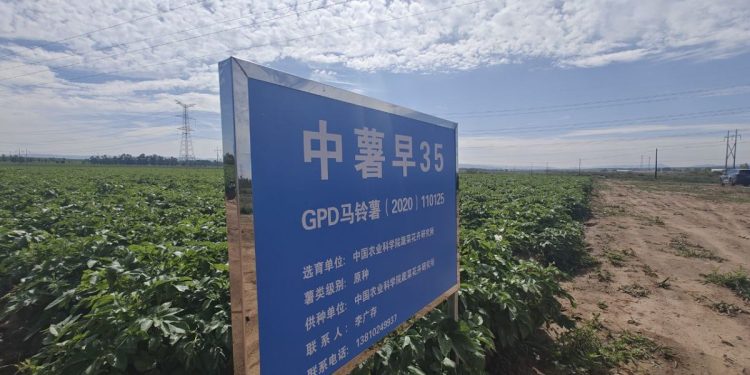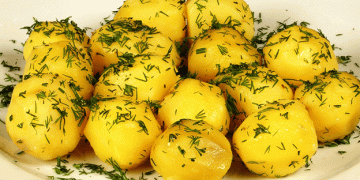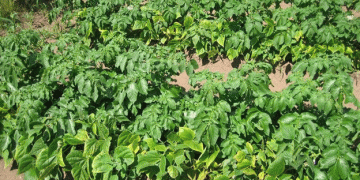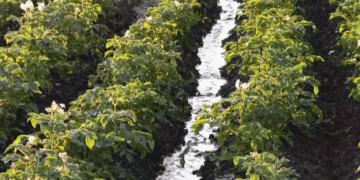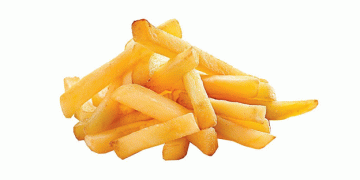On July 29th, the Potato High-Yield and High-Efficiency Technology Seminar and Field Observation Meeting took place in Hohhot, Inner Mongolia Autonomous Region, China.


The event showcased integrated technologies from the “Integrated Research and Demonstration of High-Yield and High-Efficiency Potato Technology” project. Attendees had the opportunity to observe the integrated model demonstration base for high-yield and high-efficiency potato technology at the Vegetable and Flower Research Institute of the Chinese Academy of Agricultural Sciences in Hohhot, Inner Mongolia.
“Five key technologies, including comprehensive excellent germplasm evaluation, green high-yield and high-quality new varieties, potato new variety breeding, efficient water and fertilizer utilization, integrated green control technology for diseases and pests, and key technology for staple food processing, have been integrated to construct the high-yield and high-efficiency potato technology model. Compared to conventional drip irrigation, this model can achieve a 10% reduction in water use per acre, a 15% reduction in fertilizer use, a 10% increase in efficiency, and an increase in income of over 400 yuan per acre,” explained Li Guangcun, Secretary-General of the National Potato Industry Technology Innovation Alliance and a scientist in the National Potato Industry Technology System.
The seminar highlighted the innovative achievements of the Vegetable and Flower Research Institute of the Chinese Academy of Agricultural Sciences’ potato innovation team. Attendees were introduced to the early-maturing, high-quality fresh-eating new variety “Zhongshu Early 35,” known for its appealing appearance, excellent taste, resistance to degeneration, and tolerance for poor soils. Other showcased varieties included “Zhongshu Early 39,” an early-maturing starch-processing variety with high yields and a starch content of 16%-17%; “Zhongshu 24,” a mid-to-late-maturing fresh-eating variety with drought resistance and tolerance for poor soils; and “Zhongshu 49,” a mid-to-late-maturing starch-processing variety with high yields and disease resistance.
During the seminar, Li Guangcun presented the progress of the implementation of the “Integrated Research and Demonstration of High-Yield and High-Efficiency Potato Technology” application project. He highlighted that the Vegetable and Flower Research Institute of the Chinese Academy of Agricultural Sciences, in collaboration with affiliated units, has been working on projects such as water-saving and efficient technology integration and demonstration for potato cultivation in North China, high-yield and high-efficiency technology integration and demonstration for potatoes in Southwest China, and integrated facility cultivation technology integration and demonstration for potatoes in the Central Plains.
In recent years, the Potato Innovation Team at the Vegetable and Flower Research Institute of the Chinese Academy of Agricultural Sciences has developed 51 new potato varieties, with a cumulative promotion area of nearly 100 million mu (approximately 6.67 million hectares). They have received one second-class national science and technology progress award, over ten provincial and ministerial-level awards, and have had three leading varieties selected by the Ministry of Agriculture and Rural Affairs.
Zhang Shengping, Deputy Director of the Vegetable and Flower Research Institute at the Chinese Academy of Agricultural Sciences, pledged full support for the potato team’s efforts to promote collaboration and drive the green, high-quality development of China’s potato industry. The goal is to enhance production stability and ensure supply capability, contributing to national food security and the transformation of China from a potato-producing nation to a potato powerhouse.
The event was organized by the Vegetable and Flower Research Institute of the Chinese Academy of Agricultural Sciences, with the support of the Hohhot City Agricultural and Livestock Technology Promotion Center in Inner Mongolia Autonomous Region. Over 120 participants attended the conference, including experts, scholars, and representatives from relevant enterprises and institutions from across China.
(Photo courtesy of the Vegetable and Flower Research Institute, Chinese Academy of Agricultural Sciences)
